#newfoundland history
Photo
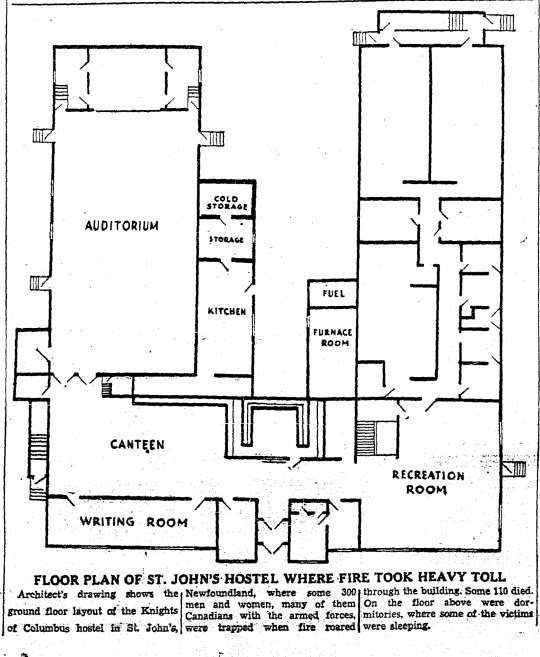
“Floor Plan of St. John’s Hostel Where Fire Took Heavy Toll,” Toronto Star. December 14, 1942. Page 2.
----
Architect’s drawing shows the ground floor layout of the Knights of Columbus hostel in St. John’s, Newfoundland, where some 300 men and women, many of them Canadians with the armed forces, were trapped when fire roared through the building. Some 110 died. On the floor above were dormitories, where some of the victims were sleeping.
#hostel#st. john's#fire#serious fire#deadly fire#canadian soldiers#tragic deaths#home front#canada during world war 2#newfoundland history#newfoundland in the british empire#world war ii
1 note
·
View note
Text
July 1 Memorial Day in Newfoundland and Labrador
A not yet province that had the least to give yet gave the most.
No family untouched by loss, an entire generation shaped by excessive loss, and the trajectory of Newfoundland forever changed.
The morning after the opening of the Battle of the Somme, just 68 Regiment soldiers answered roll call.
It was a brutal, bloody beginning to a battle that would see 57,000 British Commonwealth casualties in the first day alone, and would cause irreparable loss for a generation of Newfoundlanders and Labradorians.
In December 1917, the Regiment received royal designation from King George V, who recognized the special contribution that such a small population made to the war effort.
It has been known ever since as the Royal Newfoundland Regiment, the only unit to receive such a distinction during the First World War.


#Newfoundland history#Memorial Day#Memorial Day in Newfoundland#Royal Newfoundland Regiment#world war 1#battle of the somme
1 note
·
View note
Text
Is Newfoundland part of Canada
Is Newfoundland part of Canada
Newfoundland is known for its stunning coastline, friendly people, and, of course, its delicious seafood.
It is the perfect place to get away from the hustle and bustle of city life and enjoy some of the best nature has to offer.
You can explore the rocky coastline and search for hidden caves and coves, visit St. John’s, the capital city, and stroll through its charming streets.
You can also take…

View On WordPress
#Best time to visit Newfoundland#Does it snow a lot in Newfoundland#How far is Newfoundland from Toronto by car#is newfoundland a country or part of Canada#Is Newfoundland warm or cold#Newfoundland has something for everyone.#Newfoundland history#What are the 3 cities in Newfoundland#What language is spoken in Newfoundland#Why did Newfoundland became part of Canada?
0 notes
Text
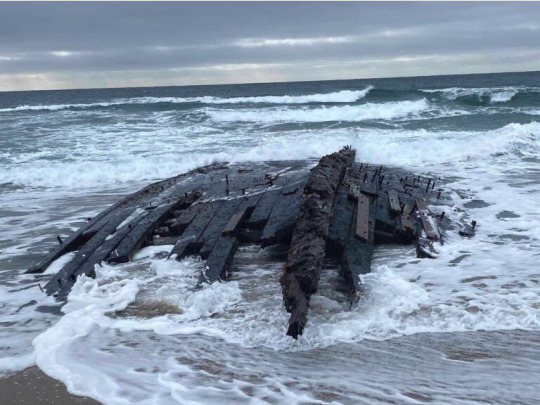
Here is the unknown lady who came to the coast of Cape Ray, Newfoundland and Labrador earlier this year. It is not yet known what year she was made, but what we do know is that she was probably made of oak and based on her structure I would guess that she dates from the late 18th or early 19th century - let's see what the research reveals.
219 notes
·
View notes
Text

An unknown soldier has been returned to Newfoundland and Labrador, as Newfound prepares to mark Memorial Day, 1st July.
On July 1, 1916 — the opening day of the Battle of the Somme — most of the Newfoundland Regiment was killed or wounded at Beaumont-Hamel. The date has since been recognized since as a solemn one, even after Newfoundland joined Canada in 1949 and began to celebrate Canada Day on the same date.
Preparations have been underway to refurbish the Newfoundland National War Memorial ahead of the 100th anniversary of its opening. It will be the final resting place for the unknown Newfoundland soldier recovered from the Somme battlefield, to be interred now inside a newly constructed tomb.
The soldier was laid in state at Confederation Building from June 28 to June 30, allowing members of the public to visit the casket.
Photo credit: Helen Escott
#history#military history#newfoundland#canada#ww1#world war one#first world war#battle of the somme#somme
53 notes
·
View notes
Text
A new book, published earlier this fall, documents Newfoundland and Labrador's queer history, highlighting those who helped push the queer movement across the province, country and the world.
Author Rhea Rollmann, who spent years compiling more than 150 interviews and pieces of archival material through her journalistic reporting, told CBC News she created A Queer History of Newfoundland to fill in that work and document a history that has largely been unwritten.
"It's hard to describe just how powerful it was. I knew we had a powerful queer history, but I didn't know just how deep it was," Rollmann said Tuesday.
Continue Reading.
Tagging @politicsofcanada
#cdnpoli#canada#canadian politics#canadian news#newfoundland and labrador#queer history#lgbt history#lgbtq2s+#lgbt
84 notes
·
View notes
Text






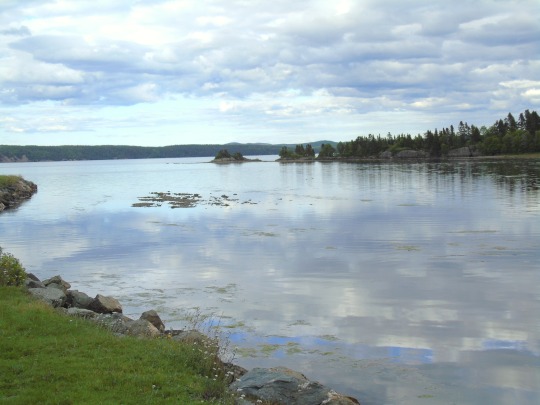





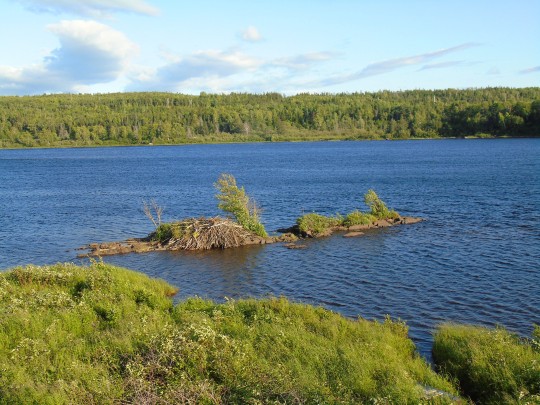

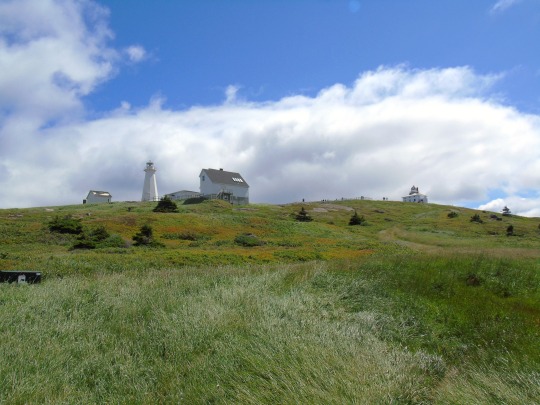

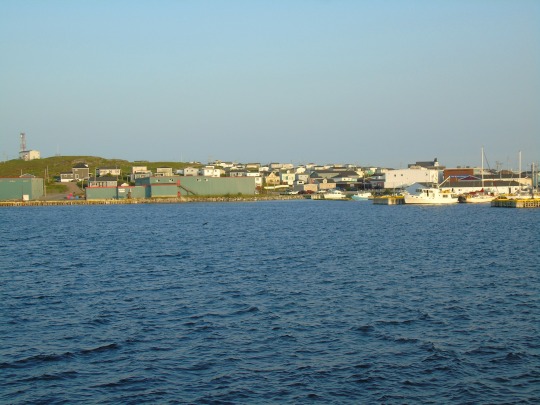


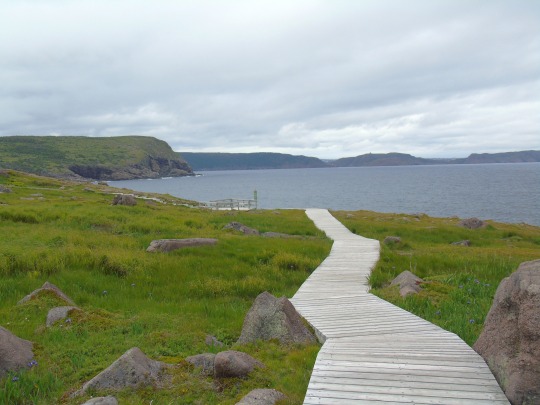
Newfoundland was reverted to being a crown colony of Great Britain on December 21, 1933.
#Newfoundland#reverted#crown colony#21 December 1933#90th anniversary#iceberg#Green Bay#King's Point#Atlantic Ocean#Canadian history#travel#vacation#summer 2015#architecture#landscape#seascape#cityscape#Canada#tourist attraction#Grand Falls-Windsor#Exploits River#Gambo River#Stephenville#Deer Lake#St. John's#Cape Ray#ship#Clarenville#Corner Brook
50 notes
·
View notes
Text
A little bit of history of the Mi’kmaq in Newfoundland
My name is Lydia-Isaac. I was born in Ktaqmkuk, but have spent most of my life in Sipekne'katik and Kespukwitk. As far as most people are concerned, that means I’m a Newfie raised Nova Scotian, but Newfoundland and Nova Scotia are simply built on top of the same territory known as Mi’kma’ki. As far as I’m concerned, despite moving around a lot growing up, I can at least say I’ve never had to leave my people’s homeland.
Pre-Colonization Travel
Evidence says that the Mi’kmaq of Unama’ki (Cape Breton) travelled across the Gulf of Saint Lawrence to Ktaqmkuk (Newfoundland) for seasonal hunting and fishing at least as early as the 16th century. Oral history says this goes back even further.
Relationship with the Beothuk
There are mixed historical analyses on what the relationship between the Beothuk and the Mi’kmaq was like. There is a common myth among settlers that the Mi’kmaq are responsible for the Beothuk genocide, pushing in on their territory and killing them on behalf of French settlers, whom the Mi’kmaq were allied to. This should be highly scrutinized and criticized for what it truly is: Displacement of blame onto another Indigenous Nation as a scapegoat. Most tales of hostilities between the Mi’kmaq and Beothuk come from English accounts. The one explanation we have from a Beothuk source, the captured woman known as Shanawdithit, said to one Bishop Inglis: “Originally they [the Beothuk] had intercourse with the Mi'kmaq and they could partially understand each other, and that the Mi'kmaq who have been visitors here for centuries were formerly on friendly terms but their enmity has been implacable and of the deadliest character for about 150 years.” According to this, hostilities only began after outside colonial pressures were in place. Make no mistake that those responsible for the Beothuk genocide are the settlers who hunted them and their resources, and spread deadly diseases.
Colonial Changes
The relationship between the Mi’kmaq and the land/its other living beings is not just one of harvesting resources, but a spiritual connection and responsibility. The principles of this relationship is known as Netukulimk, which guides the Mi’kmaw way of life. One of the core understandings of Netukulimk is the concept of Msit No’kmaq; the understanding that all spirits are related. (It is also worth mentioning that everything that casts a shadow has a spirit.) Therefore, a person is responsible to respect the life around them—that of the land, of the flora, of the fauna—just as you would respect another family member. When you harvest, you only harvest what you need. When you hunt/fish, you only hunt/fish what you need. And you offer thanks to that which you have taken from, every time. This way of life is one of sustainability!
Unfortunately, that sustainability was catastrophically interrupted by colonizers when Newfoundland came under British control. The caribou herds for example, which were a staple reliance for the Mi’kmaq and originally numbered up to 300,000, went near extinct. With this, so too came the astronomical death of the Mi’kmaq. John G. Millais wrote of Steve Bernard, a Mi’kmaw hunter and wilderness guide: “Steve is the sole survivor of eleven children born to old Joe Bernard, late chief of the Newfoundland Micmacs, all of whom have died from the bottle, consumption, or strains, the three principal causes which decimate the red men.” One survivor in a family of eleven children.
Those that survived this period of death were forced to largely assimilate into the settler’s society, but this too the settlers made a challenge. Getting a job as a Native person was near impossible, save for ill-paid work on the docks and boats. This is where the Newfinese slur jackatar/jack-o-tar comes from, the insinuation being that you are a poor grunt worker because of your race. (Employers denying work to Natives is still a problem today by the way, and the very reason that my family moved to NS.) It was not uncommon for communities of congregated Mi’kmaq to be forcefully relocated and then destroyed, such as Crow Gulch. In the 1870’s, Newfoundland established five reserves to try and control congregation: Conne River, Codroy Valley (Grand River), Halls Bay, St. George’s, and Gambo. But the only one still considered reserve land today is Conne River (Samiajij Miawpukek).
Joseph Fucking Smallwood

In 1949, Newfoundland joined Canada. When asked about the island’s Native population, Premier Joseph Smallwood falsely claimed there were no Indians in Newfoundland. This meant that the Mi’kmaq living on the island were not registered under the Indian Act, enabling the new province to ignore the People’s existence and rights. It also meant settlers were taught in schools the myth that all Indigenous peoples of Newfoundland were killed off, for a very long time.
Miawpukek First Nation
It wasn’t until 1987 that Miawpukek First Nation (Conne River) was federally recognized, after a long-time campaign from Indigenous activists on the island insisting they were not, in fact, ghosts.
But Samiajij Miawpukek is just one of many traditional Mi’kmaw communities, and that’s not even counting those living in urban areas. What about them?
Qalipu First Nation
Qalipu First Nation was established in 2011 by the federal government as an “easy” solution to catch all the rest of the Mi’kmaq in Newfoundland. The problem is, they were not expecting very many applicants—because of that old Joseph Smallwood-sourced myth—so they decided that the checks for applying for Status and membership were not required. This was a huge mistake, as it opened up doors for over 100,000 people to apply. Naturally, the Mi’kmaq of other provinces were rightfully cross with the government for this, and questioned the legitimacy of the Band.
It took nearly a decade for Qalipu leadership to sort out membership, limiting the number of members down to those actually involved with the Band, and making cultural participation a requirement. In 2019, the First Nation was recognized by the Mi’kmaw Santé Mawio’mi (Grand Council).
Today
Thanks to revitalization efforts, the Mi’kmaw language is making a come-back on the island after many decades of near extinction. With this comes the revival of practicing traditional songs, dances, artwork, and other expressions of cultural identity. To paraphrase from my uncle: it’s about relearning what was taken from us for so long.
What should come next, in my opinion, is the restoration of Netukulimk on a large scale. There are many who agree and are working on just that, so we’ll see what comes in the future of the island.
173 notes
·
View notes
Text





The "vile efforts" of Newfoundland's CODCO comedy troupe
12 notes
·
View notes
Photo



600-Year-Old English Gold Coin Found in Newfoundland
The discovery of a rare gold coin on the south coast of Newfoundland, Canada, may challenge traditional historical narratives about the timing of European contact in the region, as it predates explorer John Cabot's arrival on the island by at least 70 years.
In a press release last week, the Government of Newfoundland and Labrador said that the English coin was found during the summer of 2022 by Edward Hynes, a local amateur historian, who reported it to officials as required under the province's Historic Resources Act. The 600-year-old coin predates the first documented European contact with North America since the Vikings, in a region with a 9,000-year-old history of human settlement and rich Indigenous traditions.
After consultation with Paul Berry, a former curator of the Bank of Canada's Currency Museum, the coin was identified as a Henry VI quarter noble, minted in London between 1422 and 1427. In the 1400s, the coin would have represented a significant sum of money, valued at 1 shilling 8 pence, or around 81 Canadian dollars ($61) today.
Prior to this discovery, a coin minted in the 1490s and found in 2021 at the province's Cupids Cove Plantation Provincial Historic Site was considered the oldest English coin ever found in Canada.
As Berry says that the coin was likely out of circulation when it was lost, there is much speculation about exactly how the gold quarter noble coin made its way to Newfoundland and Labrador. The precise location of the discovery is being kept secret to discourage treasure hunters.
The discovery of the coin underscores the intriguing archaeological record in Newfoundland and Labrador, Canada's easternmost province. Stories of Viking arrival are contained in Icelandic sagas, citing visits by Leif Erikson over 1,000 years ago, and archaeological evidence of a Norse settlement, which was found in L'Anse aux Meadows, Newfoundland, and declared a Unesco World Heritage site in 1978.
Other unconfirmed accounts of European contact include tales from England's Channel Islands about a ship being blown off course in the late 15th century into a strange land full of fish; historical Portuguese maps depicting Terra do Bacalhau (or, the land of codfish); and the "Voyage of Saint Brendan," a legendary account of an early 6th-century sea voyage by an Irish abbot.
In 1583, Newfoundland became England's first possession in North America and the establishment of fishing operations on the outer coastline of the island cut off access to traditional food sources for the indigenous population.
"There's been some knowledge of a pre-16th century European presence here for a while, you know, excluding Norse and so on," Brake told CBC. "The possibility of perhaps a pre-16th century occupation would be pretty amazing and highly significant in this part of the world."
#600-Year-Old English Gold Coin Found in Newfoundland#Edward Hynes#metal detector#metal detecting finds#archeology#archeolgst#gold#gold coin#Henry VI quarter noble#treasure#ancient artifacts#history#history news#ancient history#ancient culture#ancient civilizations
196 notes
·
View notes
Photo




hi i was informed that some of you guys wanted to know more about DM so i made a VERY BRIEF history of their relationship (half of which is completely ignoring each other because they live in completely different worlds but occasionally have mirrored experiences).
if you’re curious about the history, @quatschmachen tends to cover the NL side and I tend to cover the AB side and we don’t mind trying to answer or speculate about it. You can also check out the (rough!) timelines i drew up for procan for bert and ben. again want to stress that this isn’t a one true canonical reading, we just think it’s neat.
I’ll transcribe my messy writing and have some additional notes below.
---
1940s: [AB] just barely got provincial rights after 3 decades and is now about to strike oil. [NL] forced to give up independent nationhood and join Canada. [Didn’t notice each other at all].
- I think this is interesting to note because they have sort of reverse, mirror images of each other. Ben lost nation status after the war (after being ignored for literal centuries and getting the barest acknowledgement of responsible government from England in the 1850s) because Britain was concerned that NL would have another economic and political crisis as they did between the world wars where Britain had to step in and govern, even though NL was so economically profitable during and after the war that they were lending money to Britain rather than the other way around. Britain and Canada worked together to confuse and persuade NL to give up independence.
- Bertie meanwhile (and the other prairie provinces) actually had fewer provincial rights of control than all other provinces that had already joined confederation. Getting control of resources between the world wars was just in time for the major oil strike at Leduc in 1947. This combination of being perceived as a “lesser” province and sudden economic weight to throw around is still part of this chronic struggle AB has had (which has now manifested into AlBerTa SoVerEigNtY!!11)
---
1970s-1980s:
[AB] record profits during oil crisis, record losses when made to subsidize Canada] [National Energy Policy] [NL] losing out hydro profits to QC, struggling to benefit from offshore oil exploration. Catching record amounts of fish...
- Bert’s rich bitch phase really took off in the 70s, which is the era that people today still look back on with nostalgia and no small amount of bitterness. Because oil was so expensive around the world at this time, Canada essentially interfered in the industry, made Alberta sell oil at a discount to the eastern part of the country and taxed sales to the US, something they did not do with hydroelectricity exported from BC or Quebec. Alberta still felt like a colony of Canada rather than an equal partner in confederation for this reason.
- Likewise, NL was having its own battles with confederation during this period. Churchill Falls was a hydro-electric dam built in the 50s in Labrador, one of the largest in the world at the time. Electricity would be transmitted through Quebec and sold from Quebec to New York - but Quebec had little desire to share the windfall profits with Newfoundland. (This isn’t even touching on how the dam affected the people of Labrador, particularly the Innu). Likewise, the federal government had control of offshore resources, again cutting NL out of profit from oil exploration; equally urgently, the other offshore resource that had supported NL for the past 500 years, the fishery, was under federal control as well. The 70s saw the number of fishermen double and the (overestimated) stocks of fish rapidly decline...
---
1990s:
[AB] major recession and cuts, leaving farms for the oil patch. [NL] moratorium on cod fishing forced him to move west for work.
[opinions of each other]
[AB as] “humourless tight-fisted entitled brat”, [NL as] “lazy, uneducated job stealer who won’t shut up”
- In 1992, Canada declared a moratorium on the cod fishery which immediately led to a mass out-migration of young people from NL and Atlantic Canada and leaving behind an aging population dependent on federal support. Meanwhile, a series of cuts and privatizations at the provincial level in Alberta and a pronounced lack of interest in diversifying the economy away from oil and gas (thanks Ralph Klein :/ ) meant leaving the farm for the oil patch was (and is) a more viable (though short term) lucrative option for both Albertans and other provinces looking for work.
- So they meet at last. And they absolutely despise each other.
---
2020s:
((what on EARTH is going on))
AB: please don’t leave me
[NL] thinks this is the funniest little meow meow on earth
- I don’t know exactly when the relationship between these two mellowed out. It was pretty tense still when I was growing up, and I wouldn’t say there was really a mutual appreciation between the two until maybe after the 2008 crash or so? But that’s me trying to apply arbitrary dates. There’s obviously still some tension today, and there’s also tension between those who stayed and those who went back home etc etc. It’s Complicated.
- but it’s interesting so i like to write them complaining and fighting over dumb things because it makes me laugh :) but I do think they would have reached some point where they started looking at each other’s histories and going “hey wait same hat”. Okay different hat... but you know what I mean. But I think they see pieces of themselves in each other and vice versa and it makes for an interesting dynamic (regardless of platonic or romantic interpretations).
- but yeah basically bert was socialized by bible thumping evangelists and then by coke dealing oil cowboys so you can understand why he has this weird complex about relating to other people in healthy ways, he’s just lucky that ben is old enough to find his quarter life crisis absolutely hilarious and actually somewhat sympathetic given that he understands what independence and interdependence actually mean from his lived experience. so yeah.
#projectcanada#iammatthewian#iamp: alberta#iamp: newfoundland#pc: alberta#pc: newfoundland#ralph campbell#benjamin o'reilly#dirty money#hapo doodles#traditional art#ink#and yeah i did think about how to address ben not being a kid for my own headcanon#i just haven't had the opportunity to use it for max comedy so just hold your horses#but when you read the history you can see why we find it easier to write him as an adult sooo#again sorry for the friggin essay
22 notes
·
View notes
Photo

“MEMBER ARRESTED ON FRAUD CHARGES,” Kingston Whig-Standard. October 29, 1932. Page 1.
----
Newfoundland MP Faces Charges With Regard to the Dole
---
ST. JOHN'S, Nlfd. Oct. 29— Roland Starkes, opposition member for White Bay in the Newfoundland Legislature, was arrested last night on seventeen charges of fraud in connection with distribution of relief to the unemployed.
His arrest followed an investigation conducted by Police-Sergeant Russell, who charged in his information that Starke had fraudulently signed dole receipts during a period of several months.
Arraigned in the magistrate's court, Starkes was released on bail of $10,000.
Roland Starkes and F. G. Bradley, member for Humber, were the only supporters of former Premier Sir Richard Squires returned in the June elections when Prime Minister F. C. Alderdice was swept into power.
#st. john's#newfoundland#newfoundland history#nlpolitics#welfare cuts#political corruption#fraud#unemployment relief#relief recipient#relief department#poverty relief#relief fraud#robbing hood#great depression in canada#crown colony#british empire
1 note
·
View note
Text
Auguste Neel, the only man to be guillotined in North America.
Truly one of a kind, murderer Auguste Neel occupies a singular place in criminal history. The islands of St. Pierre and Miquelon, though sited close to the Canadian territory of Newfoundland, remain a French colony to this day. While Canada hanged its civilian criminals and shot its soldiers for capital crimes, France used its dreaded guillotine even if it had to import one for the occasion.
For…

View On WordPress
#Auguste Neel#bourreau#bourreaux#Canada#crime and punishment#death penalty#Diebler#France#guillotine#History#les bourreaux#Martinique#Newfoundland#St Pierre et Miquelon#true crime
2 notes
·
View notes
Text
Newfoundland: a Giant and Historical Dog

Newfoundland: a Giant and Historical Dog, known for its strength, intelligence, and gentle temperament. The Newfoundland is a large, powerful, and working dog. Originating from Canada, these dogs were originally bred to haul fishing nets, pull sleds, and rescue them from the water. Today, they are bred as family dogs, therapy dogs, and show dogs. Read more.......
#newfoundland and labrador#Newfoundland dog breed#history of newfoundland#loyal dogs#cute pets#Historical background and Origins of Newfoundland#Importance and Popularity of the Newfoundland
4 notes
·
View notes
Text
The terror of Newfoundland
British Captain Peter Easton (1550 - after 1620) was the terror of Newfoundland and was already known as an arch-pirate by the fishermen who stayed in the area in 1610. The pirates of that time considered Newfoundland an excellent place to equip and supply their ships. In addition to the abundance of food, drink and supplies during the fishing season, the 20,000 or so fishermen who manned the boats were an invaluable source of new recruits who were persuaded to join the pirates either by the promise of wealth or armed forces. Law and order did not exist in the rough fishing camps, which meant that a strong pirate could plunder and pillage at will without fear of reprisals from civil or military forces.
This was also the case when Easton raided Harbour Grace in 1612 and stole five ships, 100 weapons and other items worth ten thousand pounds. He also 'recruited' another 500 crewmen and took various prisoners, including Sir Richard Whitbourne, who at the time was busy losing his considerable fortune in the effort to colonise the island. Whitebourne, however, proved to be unlike any prisoner Easton had ever encountered, and so denigrated the pirate's life during his eleven weeks' imprisonment that Easton finally relented, as he asked him to return to England "to some of his friends and beg them to become humble petitioners to the King for his pardon".
Whitbourne was more the happy and renounced the pirate's offer to make him rich. Easton decided to take his time in returning to England to give Whitbourne the opportunity to pardon Easton.
What he then learned was that Easton had already been pardoned in 1612, but that he could not be found. This pardon had been issued to chase Easton out of the area because he was disrupting trade there.
Easton decided to use this waiting time wisely by going to the Azores and intercepting a Spanish treasure fleet. With his 14 ships now loaded with booty, he cruised off the coast of Barbary waiting for news of his pardon. When he finally decided that the pardon thing wasn't working out, he sailed to another pirate favourite, Villefranche. He brought his booty ashore (estimated at two million in gold), bought himself a magnificent palace and lived out the rest of his life in wealth and luxury, the first of many rich people to retire on the Côte d'Azur.
Easton was considered an excellent seaman and navigator, a good tactician and artilleryman and, as a pirate, bold and brave but not bloodthirsty. With his fleet, he was a serious opponent even for the leading naval powers, who was never confronted or captured at sea by the pursuing fleets sent to capture him. His pirate flag was still without a skull and crossbones and all black. At least that is the legend based on the writings of Sir Richard Whitebourne.
126 notes
·
View notes
Photo

Made some 1930s ish AU Drawings for like no reason :T
I also Tried to draw water, but failed at it ;3;
Bottom left corner is Newfoundland, and Alberta messing around, trying to entertain themselves, and succeeding.
I just also wanted an excuse to draw NWT, I just love her :3
I’ll be sure to give the others a lil love too at some point...
Explanation for the top left corner, is that Sask fell up the stairs, not fun (From experience, not fun). I have the story for that one, is that he was not having a good week, which happens.
Plus the colour scheme for Sask’s outfit in the top left corner was because I spent literal three days trying to figure out the colour scheme, and just chose the colours from another drawing. Not a Mountie uniform, just shares the colours at the time.
#I'm gonna stop now before I gush about Mountie History for no reason#Project Canada#APH#Hetalia#APH Hetalia#Iammatthewian#IAMP Newfoundland'#PC: Newfoundland#IAMP Alberta#PC: Alberta#IAMP Saskatchewan#PC: Saskatchewan#IAMP Northwest Territories#PC: Northwest Territories#1930s AU
16 notes
·
View notes